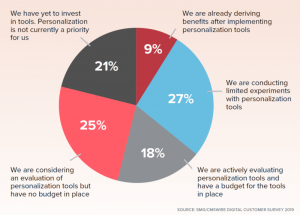When I meet with potential customers, they often ask who I see as my competition. Every one of us has some type of competition; it’s a little disingenuous to say, “Oh, we have no competition.” Often for branding services or public relations services and certainly for marketing collateral services, we have both local and national competition. I’m sure you do as well.
My biggest and most fearsome competitors are:
- Fiefdoms
- Silos
- Inertia
Let me explain why these types of internal competition are my greatest challenges for providing outsourced marketing services. Perhaps they’re your greatest challenge as well. I’ll also recommend a few things that you can do about them.
Fiefdoms
Frequently, and especially when dealing with smaller organizations where the president/CEO/founder is involved in all business decisions, from the largest to the smallest, I have found myself faced with a Fiefdom mentality. You may have heard this argument when pitching your services:
“We’ve got Jane and Peter on staff. They can provide the same thing you’re offering in-house for less money.”
This, of course, assumes that Jane and Peter have the same experience as you and your team, that they can provide the same level of advice and counsel from an outside perspective, and that they are able to tap additional resources whenever necessary based on the extensive partner networks they’ve built. Which, of course, they don’t, can’t, are unable to and don’t have, respectively.
It’s tough to overcome a fiefdom, particularly because the person you’re dealing with already has a mindset that says “In-house is best.” The best story to provide them is the experience of similar customers who have benefited from outsourcing to you.
Silos
Silos actually occur frequently in large and growing organizations. You often run into them when you pitch a service that doesn’t exactly fit a specific model or bridges a few different practice areas or departments. Training services and some types of IT applications are common offenders. You may have heard this argument when pitching your services to a silo mentality:
“Wow! That really sounds great, and I think we could use it. The problem is that I don’t have the money for that in my budget. I’d need to talk to another department and see if they would also be interested.”
Silos are often staffed with mid-level managers, each of whom jealously guards his or her budget. If you’re trying to pitch something that bridges a couple of silos, you’re probably not talking to the decision maker.
One way to overcome a silo is to offer to trim your service to best meet the available budget authority for the person you’re pitching. You could also offer to meet with all the peers with budget authority you are seeking to earn some budget from. But the best way to work with a silo is to avoid it entirely by pitching up a level, where the silos all properly appear to be straws in the same cup.
Inertia
Inertia can occur at any place, at any time, without any warning. You’re pitching a product or service, you seem to have established a rapport and you’re getting great feedback, when suddenly, BLAM! Your prospect says:
“Thank you very much for your time. We have decided not to proceed at this time. We will keep your information on record.”
Inertia is tough. It can come from the top just as easily as from below. Inertia mentality is actually FEAR. Your prospect fears that making a decision will result in a bad outcome, so he or she avoids making a decision. When inertia takes the form of choosing to remain with an incumbent vendor, the fear is that your product or service may not meet or beat the incumbent – or at the very least, may cause a hiccup in “the way that we always do things around here.”
The best way to overcome inertia is to meet it head on. Ask your prospect flat out what fear they have and how you can help alleviate that fear. Can you provide a test, a pilot project? Can you perhaps work with the incumbent vendor and slowly add your product or service into their mix? When your prospect is stuck in the mud, pushing them until they break isn’t the answer. You may need to dig around them or add a little water and loosen them up.
What’s your competitive story?
Business & Finance Articles on Business 2 Community(85)
Report Post







